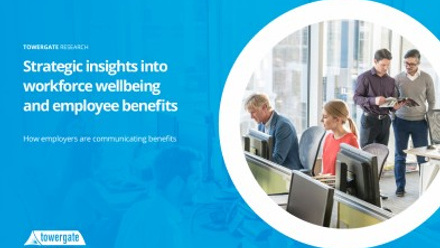Ways to improve employee wellbeing through flexible working

One of the most apparent changes for most of us has been the change in our working environment. Before Covid-19, many employers had reservations about allowing employees to work from home, concerned about employees' productivity. But following government and health authorities' recommendations, remote working quickly became a reality for companies everywhere. Any concerns about productivity were also quickly forgotten, with various studies showing that productivity has gone up, including one Californian study which found a 47% increase in employee productivity for those working from home.
So, if employees are indeed more productive when working from home, could flexible working be the new norm?
We asked employees what they want
In April, Benify surveyed approximately 5,000 participants aged 18 and older in the UK, Germany and Sweden. We discovered that, in the UK, flexibility – that is, the ability to work from home and having flexible working hours – is the most important benefit to employees.
The above statistic may initially come as a surprise at a time when many workforces across the UK are already working from home and, therefore, likely to have greater flexibility than previously. However, as Katie Goodwin, head of client relations international at Benify explains, the meaning of flexibility has changed.
"Flexibility pre-Covid-19 meant working from home, making sure your work could fit around your life, and that's even more relevant now. Work and home lives are now blurred lines, and juggling your family commitments, elderly care, children and being able to go for a run in the middle of the day takes a different level of flexibility," she says.
We asked HR leaders what they think
To find out what HR leaders think about the current remote working situation and how the work of HR has changed, we surveyed more than 900 HR professionals. 89% of participants said they have allowed employees to work from home during the pandemic, while just under 11% have not allowed employees to work from home due to company policies or practical restrictions.
What about the future? Even when it is no longer essential for employees to work from home, our survey reveals that 77% of HR leaders intend to allow employees to continue working from home if they want to.
A hybrid way of working
In recent years, numerous studies have linked flexible working and employee wellbeing. The link shouldn't come as a surprise since flexible working conditions allow employees to create a greater sense of work-life balance. Simply being able to adjust your hours to pick up the kids from day-care, not having to commute to work, and therefore getting a couple of hours back at the start and end of the day, significantly contributes to a greater work-life balance and, in turn, a greater sense of wellbeing.
Covid-19 has forced employers to move away from traditional thinking, away from traditional work hours and traditional workplaces. A new BCG study suggests that “the future of work will be increasingly hybrid".
However, as the study suggests, one of the downsides of working from home is the risk of a more sedentary lifestyle. Even though employees are no longer commuting to work and therefore have more time to exercise, it's also easier to get stuck at home without an "off switch" telling us to shut down for the day.
Focusing on employee wellbeing
Right now, it's vital that employers are proactive in finding ways to support the wellbeing of their employees. One way is organising online social events, such as quizzes and after-work drinks, so that colleagues have the opportunity to interact with each other and counter any feelings of isolation.
Employers could send home care packages to employees filled with some team or company merchandise or healthy snacks to enjoy.
Another way is for employers to review their employee benefits offer to make sure that there are benefits that employees can utilise digitally and that focus on wellbeing. Read more about why you need to review your benefits in times of crisis.
Lastly, employers should promote physical activity. For example, encourage employees to go running in the middle of the day. Add some friendly competition and motivation by having employees take a screenshot from their phones showing how many steps they walk or run each day with a prize reserved for the person who walked the most steps at the end of the month.
The people have spoken – greater flexibility is what employees want. It's now up to employers to provide their people with flexibility and support employee wellbeing.
This article is provided by Benify.
Supplied by REBA Associate Member, Benify
Benify offers the market's leading global benefits and total reward platform.







